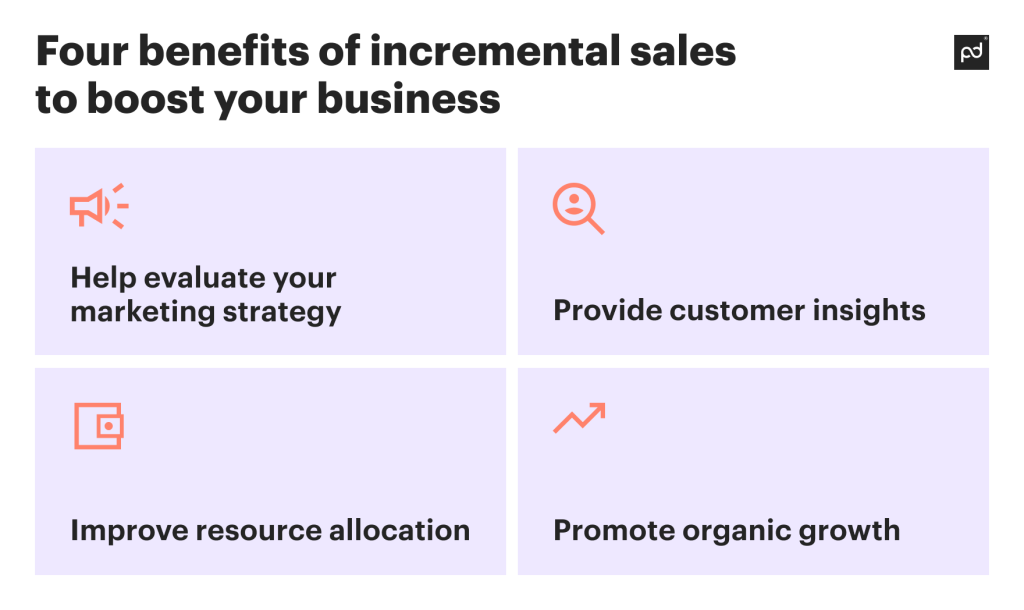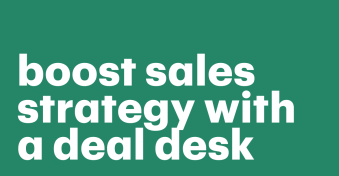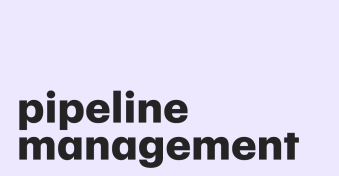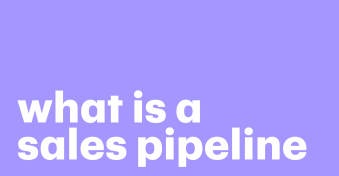Regularly keeping track of incremental sales is one of the best ways of determining how best to allocate your marketing resources.
In this article, you’ll find out how to calculate incremental sales for any given marketing campaign, as well as some useful tips and best practices on how to maximize this metric.
Key takeaways
- Measuring incremental sales helps improve your marketing strategy.
- You should focus on personalization to build stronger customer relationships.
- It’s important to take account of seasonal sales patterns when calculating results.
- Remember to factor in the cost of incremental sales when assessing marketing effectiveness.
What are incremental sales? A simple definition
Incremental sales are the additional sales you achieve as a direct result of a particular marketing activity, such as an advertising campaign.
This means first establishing what your baseline sales are.
In other words, you need to figure out how much you would have sold in a given period without the marketing activity you want to assess.
As you can see, this concept is closely linked to the idea of marketing attribution.
Why measuring incremental sales matters
There are several reasons why measuring incremental sales should be a priority for your business.
For one, doing so helps you develop a much more nuanced picture of how effective your marketing efforts are.
Additionally, if you only focus on total sales, you might miss some subtle trends that are important in the long run.
For instance, if sales for product A are growing nicely, this may seem like good news on the surface—but what if sales for your higher-value product B are declining because your customers are buying more of product A instead?
If this is the case, it may be difficult to see in the raw data, but if you track incremental sales for products A and B with respect to a specific marketing campaign, you’re more likely to notice the problem quickly and be able to move fast and do something about it.
What is the cost of incremental sales
The cost of incremental sales is the additional expenses incurred to generate and secure extra sales beyond the existing baseline.
To optimize your sales efficiency, you need to know whether your marketing campaigns are cost-effective.
That means being able to compare the returns you’re achieving from incremental sales with the amount you’re investing in marketing.
It’s a classic ‘how long is a piece of string’ scenario.
But regardless of whether you’re selling consumer goods for $10 a time or B2B solutions for $10,000 a shot, all that matters is that the money your incremental sales generate is greater than the amount you spent to make those sales happen.
Four benefits of incremental sales to boost your business
It’s worth taking a moment to dig deeper into how focusing on an incremental sales strategy can boost your business.
Here are four benefits you’ll see when you decide to do so.

- It helps evaluate your marketing strategy. This is one of the most important benefits of incremental marketing. You’ll get an immediate grasp of just how effective your campaigns are and clarity about how you should fine-tune them.
- It provides customer insights. You can measure and track incremental sales by customer segment to learn more about purchasing behavior. This can help you improve your sales strategy and tailor your sales proposal to different groups.
- It improves resource allocation. When you have a definitive idea of how well various marketing tactics contribute to sales, you’ll be in a much better position to efficiently allocate your resources.
- It promotes organic growth. Emphasizing incremental sales makes it possible to generate added value on a regular basis, promoting steady growth and shoring up your company’s bottom line.
What are the metrics for measuring incremental sales
Incremental sales counts as its own metric.
It’s related to other metrics, such as sales growth, of course, but it basically stands on its own as a measurement of marketing effectiveness.
Its two contributing metrics are total sales and baseline sales, and there’s a quick and simple formula for working it out.
How to use the incremental sales formula to make a calculation
Here’s how to calculate incremental sales.
Simply apply this formula:
Incremental sales = total sales – baseline sales
Calculating total sales is straightforward; you just add up the value of all your sales transactions in a given period.
Your baseline sales figure, on the other hand, will be an estimate.
Ideally, you should take an average of your sales over several periods when you’re not running any campaigns since this will give you an accurate figure for the level of sales you achieve without any marketing.
In practice, this can be tricky since many businesses have some kind of marketing campaign active much of the time.
If you don’t have any fallow periods you can use to calculate your baseline, one thing you can do is divide your audience into two halves and target marketing at only one of them (let’s call it group X).
This way, you can compare sales between these groups to arrive at a figure for the uplift attributable to your campaign.
This gives you an alternative formula:
Incremental sales = sales to group X – other sales
Seasonal patterns can also affect sales, particularly in industries like retail.
For instance, US hobby, toy, and game retailers made 34.5% of their sales for 2022 during the final three months of the year.
Using figures from December 2022 as a baseline for January 2023 could be quite misleading in this case—a year-on-year comparison would work better.
Make sure you try to compare like with like as much as possible.
It’s generally fine to take sales data from the several weeks just before the marketing promotion period and average it as a baseline.
Make sure you account for patterns specific to your industry and factor in an adjustment if necessary.
Incremental sales examples
Example 1:
An eCommerce store is making around $20,000 in sales each month without marketing. Management decides to spend $5,000 on an influencer campaign, which boosts sales the following month to $30,000.
Applying our formula would look like this:
Incremental sales = $30,000 – $20,000 = $10,000
Don’t forget to work out the return as well.
Total return = $10,000 – $5,000 = $5,000
Insight: The influencer campaign was effective and profitable, so would be worth repeating in the future.
Example 2:
A B2B catering company invests $10,000 in a PPC advertising campaign and sees $50,000 in sales during the promotional period. However, it calculates that its baseline sales are $45,000.
Incremental sales = $50,000 – $45,000 = $5,000
This looks like a success until you check the return.
Total return = $5,000 – $10,000 = -$5,000
Insight: The campaign was a flop and ended in a net loss. The company should conduct a close review of its strategy and consider alternative options next time.
Tips to drive incremental sales
So, what’s the best way of boosting incremental sales in your business?
Considering how closely marketing and sales work together, these tips will focus on a combination of the two.
1) Upselling and cross-selling
Encouraging an existing customer to upgrade to a premium offering or buy an additional product that appeals to them can work well with other marketing techniques to boost sales growth.
2) Bundled offers
Similarly, offering several products or services as a bundle can boost demand.
Customers tend to see this kind of offer as a bargain, believing they’re getting more for their cash.
3) Time-limited deals
There’s nothing wrong with putting a little time pressure on.
If your customers know they only have a limited period to take advantage of a deal, they’re more likely to decide to go for it.
4) Develop a positive customer relationship
This is key. Developing a relationship of trust leads to better customer retention and more customer loyalty.
These form a sturdy foundation upon which you can build organic sales growth.
Three incremental sales best practices
To generate a steady flow of incremental sales, it’s vital to approach the idea systematically.
Here are three of the most important best practices to consider.
Set clear goals
Firstly, it’s crucial to be clear about your objectives.
Are you aiming to move residual stock, or are you looking to promote a new service?
Be laser-focused on what you’re trying to achieve rather than simply approaching the project with ambiguous goals.
Set targets that are both challenging and realistic.
This is the best way to maximize your resources and achieve terrific results over the long term.
Monitor one campaign at a time
The philosophy underpinning incremental sales as a metric is similar to A/B testing in some ways.
If you’ve ever A/B tested a web page design, for instance, you’ll know how important it is to only change one element at a time—the call to action, say, or the placement of a button.
That’s because if you change more than one element at once, you can’t be sure which was responsible for one design performing better than another.
A similar issue applies to incremental sales.
You need to be able to draw a direct line of attribution between a campaign and the sales it generates.
So, take it slow and track one campaign at a time.
Take advantage of personalization
This tip ties into the idea of developing trusting relationships with customers.
Depending on where in the sales cycle each customer is at a given moment, there may be opportunities to personalize offers to them that they’ll find appealing.
Of course, the longer a customer stays with you, the more you’ll learn about their behavior and preferences.
Try offering deals tailored to their purchase history, and don’t hesitate to deploy the human touch.
Let’s face it: everyone likes receiving a special discount offer on their birthday.
Maximize revenue with PandaDoc’s robust software
Boosting incremental sales is much easier if you have the right tools in place.
PandaDoc’s cutting-edge document management solutions help you streamline your workflows and create highly effective sales proposals in minutes.
What’s more, with our template library, your reps will be able to access a wealth of resources and ideas to inspire them to deliver the best possible results.
Why not reach out to one of our experts today to learn more, or jump right in with a 14-day trial to discover for yourself what PandaDoc can do for your business?
Disclaimer
PandaDoc is not a law firm, or a substitute for an attorney or law firm. This page is not intended to and does not provide legal advice. Should you have legal questions on the validity of e-signatures or digital signatures and the enforceability thereof, please consult with an attorney or law firm. Use of PandaDoc services are governed by our Terms of Use and Privacy Policy.


